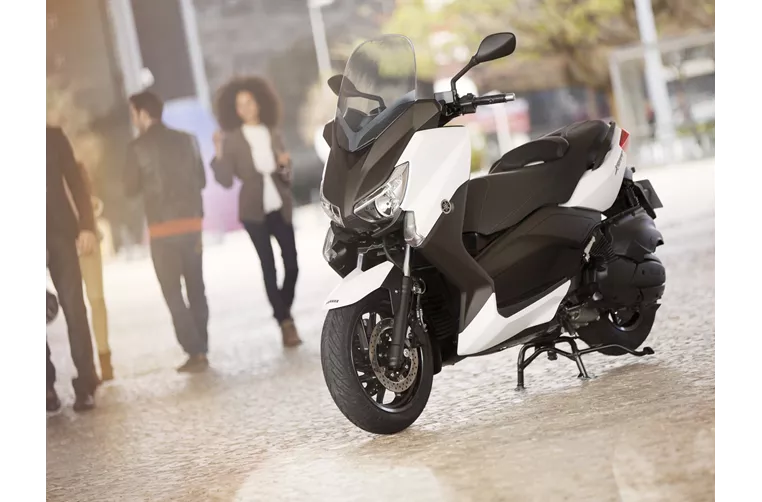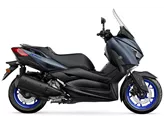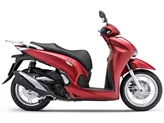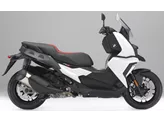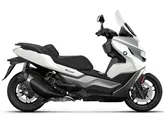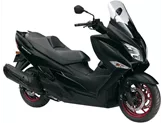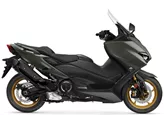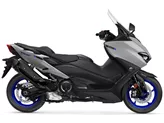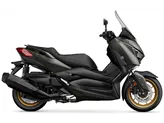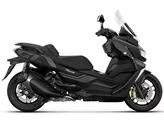Yamaha XMAX 400 2013 vs. Yamaha TMAX DX 2017

Yamaha XMAX 400 2013

Yamaha TMAX DX 2017
Vue d’ensemble - Yamaha XMAX 400 2013 vs Yamaha TMAX DX 2017
The Yamaha XMAX 400 2013 and the Yamaha TMAX DX 2017 are both scooters manufactured by Yamaha, but they have several differences in terms of their technical specifications and strengths.
Starting with the technical specifications, the Yamaha XMAX 400 2013 is equipped with a single-cylinder, 4-stroke engine with a displacement of 395cc. It produces a power output of 31.5 HP and a torque of 34 Nm. The scooter features a centrifugal force clutch type and an automatic transmission. It has a liquid cooling system and a fuel tank capacity of 14 liters. The front suspension consists of a telescopic fork, while the brakes are double disk at the front and a single disc at the rear. The scooter has a wheelbase of 1565mm and a seat height of 785mm.

Yamaha XMAX 400 2013
On the other hand, the Yamaha TMAX DX 2017 is equipped with a twin-cylinder, 4-stroke engine with a displacement of 530cc. It produces a higher power output of 46.5 HP and a torque of 52.3 Nm. Similar to the XMAX 400, it features a centrifugal force clutch type and an automatic transmission. The scooter also has a liquid cooling system and a slightly larger fuel tank capacity of 15 liters. The front suspension consists of a telescopic fork, and the brakes are double disk at the front and a single disc at the rear. It has a wheelbase of 1580mm and a seat height of 800mm.
In terms of strengths, the Yamaha XMAX 400 2013 is praised for its agile engine, wide range of accessories, high-quality level, and the inclusion of ABS. The scooter provides a smooth and responsive ride, and the availability of accessories allows riders to customize and enhance their experience. The high-quality construction ensures durability and reliability, while the inclusion of ABS enhances safety during braking.
On the other hand, the Yamaha TMAX DX 2017 is praised for its great brakes, high-quality chassis that allows for high speeds even on rough surfaces, and its powerful engine with super-tuned electronics for injection and gearbox. The scooter is known for its excellent braking performance, providing riders with confidence and control. The high-quality chassis ensures stability and maneuverability, even on challenging road conditions. The powerful engine, combined with advanced electronics, delivers a thrilling and dynamic riding experience. Additionally, the TMAX DX is also praised for its high-quality workmanship, ensuring longevity and overall satisfaction.

Yamaha TMAX DX 2017
However, both scooters have their weaknesses. The Yamaha XMAX 400 2013 is criticized for having undersized suspension elements, which may compromise the overall comfort and handling of the scooter. On the other hand, the Yamaha TMAX DX 2017 is considered to have a high price, making it less accessible to some riders. Additionally, the storage compartment in the front fairing is described as somewhat fiddly, potentially causing inconvenience for riders.
In conclusion, the Yamaha XMAX 400 2013 and the Yamaha TMAX DX 2017 are both impressive scooters with their own unique strengths and weaknesses. The XMAX 400 offers a nimble and customizable riding experience, while the TMAX DX provides a powerful and exhilarating performance. Ultimately, the choice between the two would depend on the rider's preferences, budget, and intended use.
Caractéristiques techniques Yamaha XMAX 400 2013 par rapport à Yamaha TMAX DX 2017
Avantages et inconvénients en comparaison
Avantages et inconvénients en comparaison
Yamaha XMAX 400 2013
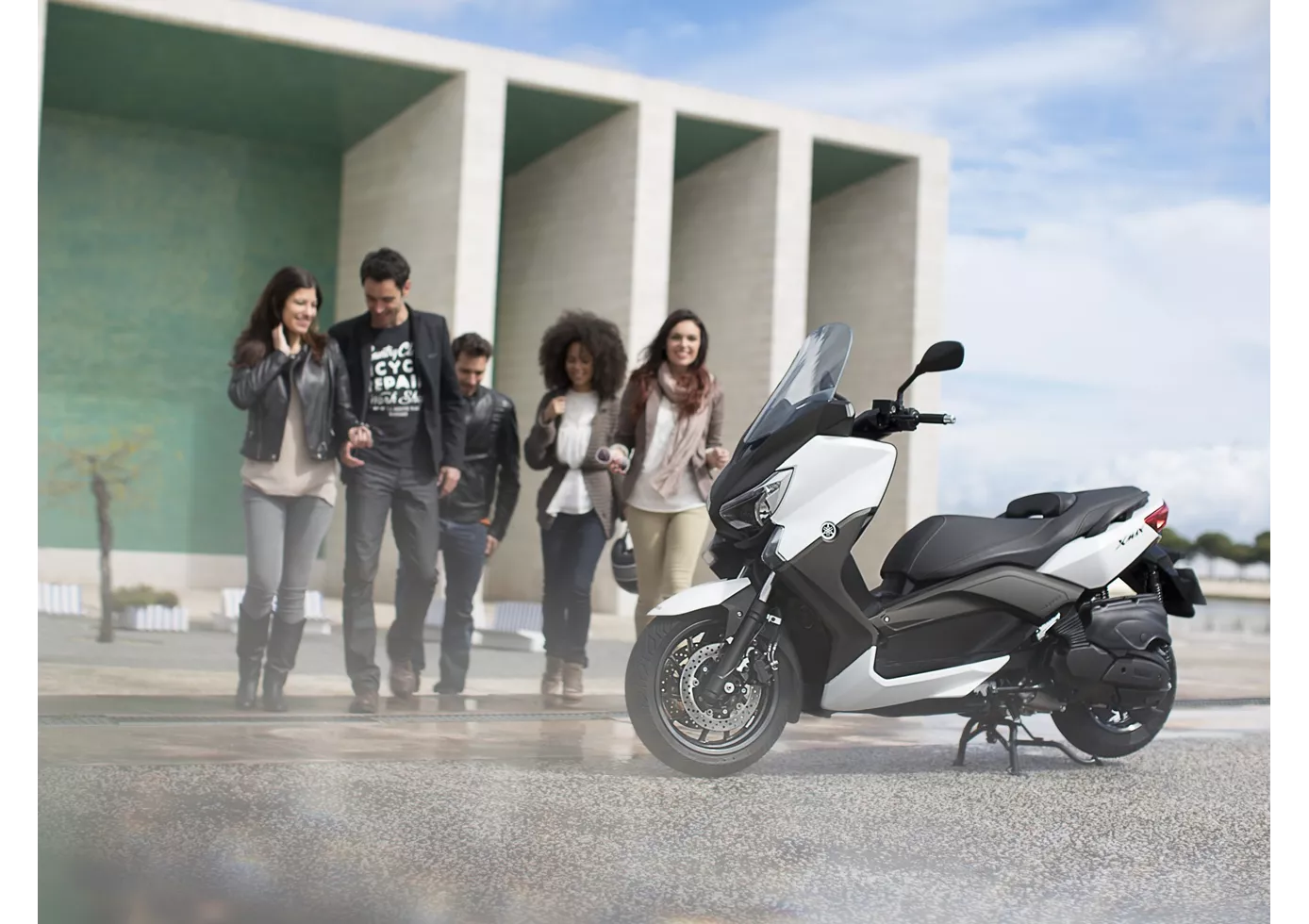
Si l'on veut absolument trouver le fameux "cheveu sur la soupe" du nouveau X-Max 400, c'est probablement au niveau de la suspension que l'on trouvera le plus de choses.
Yamaha TMAX DX 2017

En 2017, le Yamaha TMAX reste une machine de conduite rapide comme une flèche. Il est resté fidèle à sa ligne et offre des performances de motard avec un confort de scooter. Dans le millésime actuel, il dispose enfin de plus d'espace de rangement. L'unité d'entraînement a été améliorée avec beaucoup d'électronique et est fantastique au toucher. Un vrai produit haut de gamme à un prix premium.
Comparaison des prix Prix moyen du marché Yamaha XMAX 400 vs Yamaha TMAX DX
There are a few key differences between a Yamaha XMAX 400 2013 and a Yamaha TMAX DX 2017. It takes less time to sell a Yamaha XMAX 400 with 38 days compared to 168 days for a Yamaha TMAX DX. Since model year 2013 1000PS.de editors have written 8 reviews for the Yamaha XMAX 400 and 3 reviews for the Yamaha TMAX DX since model year 2017. The first review for the Yamaha XMAX 400 was published on 5/21/2013 and now has more than 60,000 views. This compares to more than 38,800 views for the first review on Yamaha TMAX DX published on 11/7/2016.
